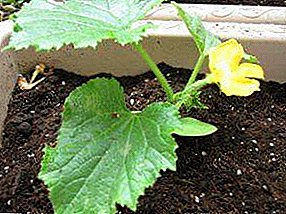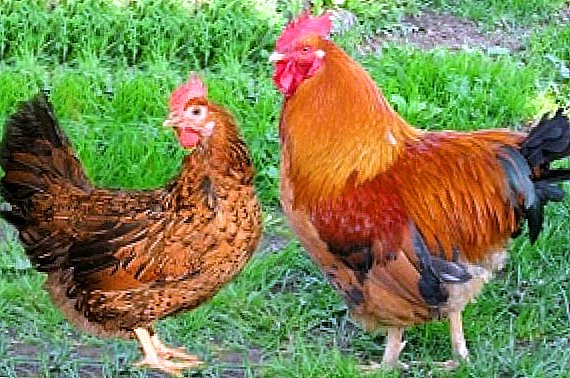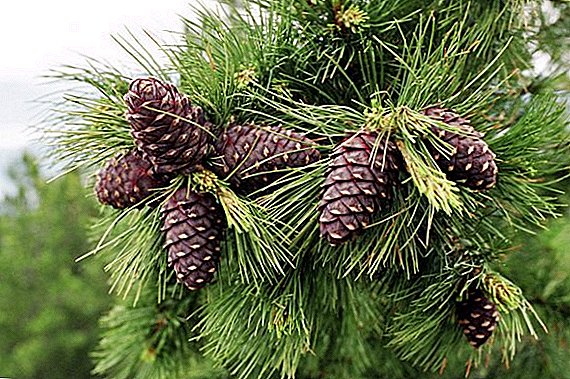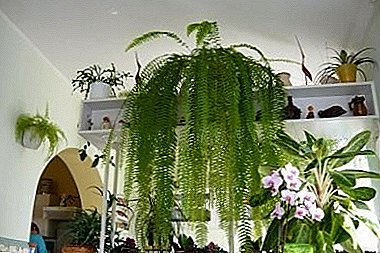
The desire to have a piece of relic forest in your home will come true if you purchase nephrolepis.
This is an amazing plant ─ same age dinosaurs. During the time of Queen Victoria, ferns became very popular in English homes.
Then they decorated the interiors of mansions and palaces in Russia.
The world of ferns is very diverse. In home floriculture there are also many species, the most famous of ferns, nephrolepis.
The name he received from combinations of two Greek words: nefris ─ kidney and lepsis ─ scales. Nephrolepis is hardy, and at the same time he has no equal in grace. This is a fairly large fern. The length of the leaves is very diverse: from 2.5 meters to 30 cm.
Nephrolepis belongs to the Davallia family along with the Davallia fern.
Kinds
Room nephrolepis counts about 30 species and many varieties, for example:
Exalted
The most common variety. Both potted and ampelous are grown. In nature, it is an epiphyte. The plant is located on a high erect stem.
Photo subspecies Nephrolepis Elevated:
Cardiovascular
The leaves of this representative nephrolepis are located almost vertically. On the shoots under the ground there are tuberous cones.
Photo subspecies Nephrolepis Cardiac
Green Lady
Ampelnoe plant, is considered one of the most beautiful ferns: long stems hang loosely in the form of a fountain, the leaves are openwork, slightly twisted. Especially spectacular this fern when standing alone on a tall stand.
Photos of the Nephrolepis Green Lady subspecies:
Xiphoid
Its leaves reach a length of one and a half to two meters. In nature, distributed in Florida and on tropical islands in the Atlantic. In the rooms it is grown as an ampelous plant.
Photo subspecies Nephrolepis Xiphoid:
Boston
It was obtained about 100 years ago as a result of breeding from the xiphoid fern. He has drooping curly fronds, rich greens. There is 10 varieties Boston Nephrolepis.
Photo subspecies Nephrolepis Boston:
Corditas
A variety of nephrolepis sublime, is of interest for indoor floriculture, as it is a rare type of terry fern with slightly curly raised upward hairs.
Photo subspecies Nephrolepis Corditas:
Curly
With wavy and twisted edges of the leaves, very decorative.
Photos subspecies Nephrolepis Kinky:
Home care
To ensure the plant a comfortable stay in the house, you need to know some features of the care of ferns.
Features care after purchase
 Store conditions are different from home conditions, and the plant needs getting used to.
Store conditions are different from home conditions, and the plant needs getting used to.
Having brought the fern home from the store, you must first put it on the table directly in a wrapper and hold it for several hours.
Then unroll and leave in the same place, checking the soil moisture. If it is dry, pour water at room temperature.
After a day, you can determine it to a permanent place. In case the wai tips start to dry, the fern stands put on a plastic bag before that sprinkling the plant.
They keep it under the package for 2-3 days, then take it off for a day and put it on for about a week for about a week, then take the package off completely.
This procedure will help to adapt to ferns grown in Holland, where greenhouse growing conditions are used for accelerated growth.
The first time Nephrolepis transplanted after purchase. Usually in two weeks. The plant must be carefully removed from the transporting pot, shake off the roots of the transporting substrate, trying not to damage them, remove the floral sponge, if it is found. In the future, the plant does not require frequent transplantation.
Lighting
Nephrolepis does not require special lighting. The only thing that can not make it ─ is the bright sun, so it should be pritenyat. And even better to put on the north or north-west windows, and in the summer to send to the open balcony, to the garden and also try to make it in partial shade.
Sometimes it is useful for the plant to turn the other side towards the light. Nrefrolepsis grows in partial shade, far from the windows, but additional lighting is required there, otherwise the plant will have a painful appearance.
Temperature
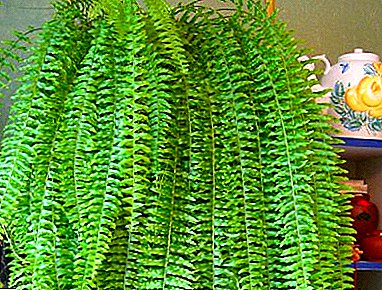 The fact that it is a plant of the tropics in its origin, presents certain difficulties in organizing the temperature and humidity conditions.
The fact that it is a plant of the tropics in its origin, presents certain difficulties in organizing the temperature and humidity conditions.
Nephrolepis loves warmth he suffers from temperature fluctuations.
She is should not hesitate throughout the year and be somewhere around 18-20 degrees.
If nephrolepis is cold, it stops growing. Leaves darken and fall off. Ferns are harmful drafts.
Humidity
Nephrolepis Demanding on humidity. For him, the optimum humidity should be at the level of 50-55%.
Maintain a comfortable atmosphere for the plant as follows:
- spray the plant regularly with soft, warm water and do it at least twice a day;
- fill the tray with pebbles and always keep it moist;
- put the pot in a deep pan and fill it with moss, moisten it often, like pebbles;
- hang on the heating battery under the window on which nephrolepis stands a wet cloth and constantly wet it;
- to arrange a warm shower for him, having previously closed the ground in a pot with a plastic bag.
Watering
The plant is always watered with lukewarm water, abundantly in spring and summer, in the fall they gradually reduce watering, in the winter they are watered very moderately. But the soil should not dry out.
If the root of the neck got out of the pot and prevents watering, then it is better to pour into the bottom of the pan. But after some time after watering it is necessary to make sure that the water in the pan does not remain. It will need to be drained to avoid rotting of the roots.
Top dressing
 According to A.A.Ladvinskaya in his book “Decorative Leaf Plants”, nephrolepsies are painlessly managed without supplements.
According to A.A.Ladvinskaya in his book “Decorative Leaf Plants”, nephrolepsies are painlessly managed without supplements.
But better feed This helps build green mass, which is important for ferns.
Usually use standard fertilizer for decorative leafy plants.
Feeding is necessary from April to September weekly. Many growers use the Agricola fertilizer for convenience.
Transfer
With such works it is useful follow the rules below:
- nephrolrolepsis should be transplanted once a year; Better in early spring (some experts advise doing transplantation at the very end of February, early March);
- for fern it is better to prepare shallow, but wide enough pots; the wider the pot, the faster the fern will grow;
- drainage should be laid out on the bottom of the pot; it may be broken clay shards and perlite mixed with moss;
- the soil is composed of 1 part of sod land, 2 parts of leaf, 1 part of peat, 1 part of humus and sand; the mixture must be disinfected by steaming in the oven at 200 degrees, or left outside if the frost is below 10 degrees;
- you can buy ready-made land for ferns;
- it is good to add crushed coal to the earthy mixture;
- Nephrolepis is placed in a pot, the rhizomes are carefully sprinkled with soil, and each layer of soil is slightly moistened;
- the substrate cannot be crushed;
- the transplanted plant should be placed in the depth of the room, further from the sun's rays;
- be sure to maintain the required humidity.
Pruning
Ferns do not need pruning, they cut only those wai that have lost their decorative appearance.
Breeding
Nephrolepis can be propagated in several ways, It is better to perform these works in the spring:
Dividing bush
 The fern is removed from the pot, shaken off the soil and the rhizome is cut, checking that there is a growing point in each part.
The fern is removed from the pot, shaken off the soil and the rhizome is cut, checking that there is a growing point in each part.
Then all separated parts are planted in pots with a wet substrate.
For better rooting, you can cover the pots with a glass jar or a plastic bag.
Within a month the plant should be in a warm semi-shady place.
Disputes
They are first sown in a small container. To get a spore, you need to cut a healthy leaf and scrape it from the bottom of it with a plastic or wooden knife. Spores sprinkled with a layer of earth a little less than half a centimeter and well watered. Shoots begin to appear in about 10 days.
Tubers
Some types of nephrolepis form tubers, the plant can be propagated by dividing the tuber and slightly drying the cut point, or young tubers can be separated and planted in a new pot, shoots appear quickly.
Shoots
Leaf antennae rooted, pinning them to the ground and securing them carefully. After they give the roots and deployed 2-3 vayi, which need to be separated from the parent bush and put in a separate pot.
Diseases and pests
Nephrolepis is affected:
- mealybug
- spider mite;
- shield;
- whitefly;
- thrips;
- leaf nematode.
The affected plant is treated with actellica or karbofos.
When infected with thrips and leaf nematode, the plant will have to be destroyed.
When infected with a spider mite, it is necessary to treat not only plants, but window sills and frames. Mite can live in wooden frames for a long time. Shchitovka affects all plants standing nearby.
 Often the plant is sick due to defects in care. With insufficient moisture, the plant is covered with brown spots, turning yellow.
Often the plant is sick due to defects in care. With insufficient moisture, the plant is covered with brown spots, turning yellow.
He needs to arrange a shower and close the cellophane package, put in partial shade.
Open the bag only for spraying. Put nephrolepis under the shower as often as possible. This is done until the plant is restored.
The fern can suffer due to lack of lighting or, conversely, from the sun's rays, when the fronds begin to dry, should analyze the light level.
Nephrolepis infects the leaf and root nematode. It comes from poor-quality water (too cold or hard). The plant will inevitably perish.
Nephrolepis can also dry when the roots are rotting when irrigation is immeasurable or because of the accumulation of water in the bottom of the pot without drainage.
Beneficial features
This fern cleans the air from household gas, neutralizes the effect of various aerosols and cleaning products, glue, varnishes, electromagnetic radiation.
It is recommended to start nephrolepis for people who are often experiencing nervous stress, with weak immunity. Nephrolepis are ideal for rooms filled with heavy energy.
Tips for flower growers:
- put nephrolepis around the TV in winter; its radiation will be beneficial to the plant;
- ferns look better if they are separated from other plants;
- it grows well near a fish tank;
- Many varieties of nephrolepis are sterile, so they can only be propagated vegetatively;
- ferns are better to buy during the period when heating does not work in apartments, at this time it is easier for them to adapt, because the natural humidity of the air in the rooms at this time is higher than during the heating period;
- brown dots on the sheets below are not a disease.
Video on the topic
Find out the interesting facts about fern Nephrolepis from the video below:
Conclusion
Despite some fastidiousness in caring, the fern Nephrolepis is one of the most common domestic ferns. All thanks to the beautiful lush foliage, which he will please diligent grower.
Other indoor ferns include: Pelley, Pteris, Cirtriumium, Asplenium, Adiantum, Davallia, Blehnum, Salvinia, Polypodium, Platicerium, Uzzhnik and Grozdnik.



